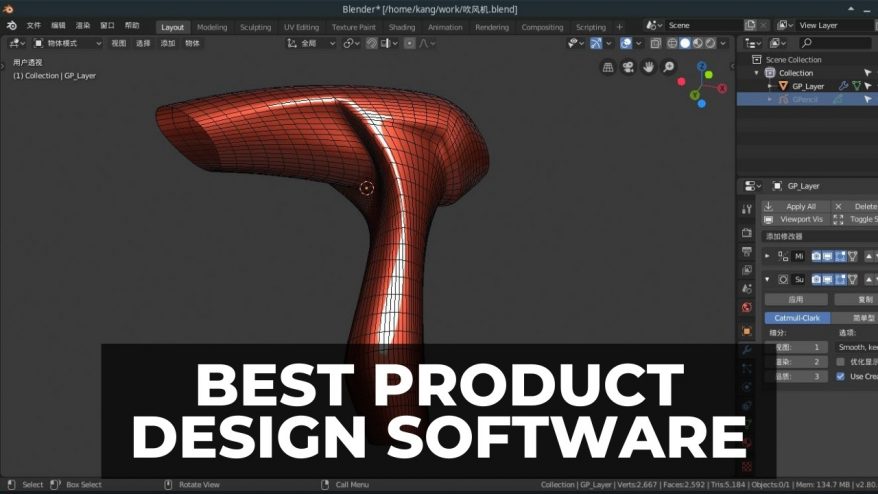From Concepts and Realizations: Grasping Merchandise Design

Product design is a diverse discipline that bridges artistic expression and practicality, changing abstract ideas into concrete solutions. At its core, product design entails the deliberate process of creating functional and aesthetically pleasing items that meet the needs of users while also addressing technological and market demands. As we navigate our daily lives, we often overlook the intricacies behind the products we use, from the most basic household items to sophisticated electronic devices. Each product begins with a concept, sparked by a problem or a desire for improvement, and evolves through systematic stages of development.
Understanding product design requires a closer look of its components, principles, and methodologies. It is not just about how a product appears, but also about how it engages with users and fits into their lives. Effective product design merges usability with innovation, ensuring that the final creation is not only visually appealing but also practical and efficient. In this study of product design, we will delve into the processes that guide designers in creating products that enhance user experience and raise everyday life.
The Design Process
The design process is a methodical series of steps that guides designers from the initial concept to the final product. It commences with identifying a problem or a need in the market. Designers perform research to understand user needs, market trends, and existing solutions. This phase is vital as it secures that the product will solve real issues and connect with potential users.
Once the research phase is complete, designers move into the ideation stage. This is where creativity thrives, and a range of ideas and concepts are created. Brainstorming sessions, sketching, and creating simple prototypes come into play. The goal is to investigate multiple solutions before sifting through the choices to the most viable options. Feedback is often requested during this stage to enhance ideas more and confirm alignment with user expectations.
The final phase in the design process involves prototyping and testing. Designers develop high-fidelity prototypes that closely resemble the final product, enabling for practical testing and iteration. User feedback is crucial during this stage to spot any issues or areas for improvement. This iterative approach ensures that the final product not only meets design specifications but also fulfills the needs of the user, resulting in a winning product design.
User Focused Designing
User-centered design is an approach that positions the end user at the heart of the product design process. This method emphasizes understanding the wants, choices, and actions of customers to guarantee that the final product provides a fulfilling and effective experience. By engaging customers early and during the design process, designers can develop solutions that resonate with their user base, reducing the chance of product failure and increasing total contentment.
To implement this approach successfully, designers often carry out studies through methods such as interviews, surveys, and usability testing. By gathering descriptive and statistical insights, they gain awareness into what clients genuinely value in a solution. This response shapes the design process, ensuring that the attributes and operations match with the desires of users. Iteration is crucial in this approach, allowing designers to improve their concepts based on suggestions from users regularly.

Finally, this approach promotes novelty by prioritizing the opinions of the customer. It promotes joint brainstorming and creativity, resulting to original products that may not have been thought of in other cases. This concentration on compassion and awareness assists create solutions that are not only practical but also enjoyable and user-friendly, consequently enhancing the overall user experience.
Prototyping and Testing
Prototyping is a key phase in the product design process, allowing designers to create physical representations of their concepts. These prototypes can take various forms, from straightforward sketches or paper models to operational digital representations. The goal is to visualize concepts and assess their feasibility. This cyclical process enables designers to detect potential issues in advance, ensuring that the final product matches user needs and technical requirements.
Evaluation goes hand in hand with prototyping. Once a prototype is created, it must undergo stringent testing to gather input from actual users. This stage is essential for comprehending how well the product meets its objectives, how users interface with it, and what refinements can be made. Testing helps identify issues and usability problems that might not have been clear during the initial design phases. By integrating user feedback, designers can refine their products to effectively target their audience.
The integration of prototyping and testing fosters a environment of constant improvement. Each cycle helps designers make knowledgeable decisions, leading to a final product that not only meets design and functional criteria but also appeals to its intended audience. This process helps connect the gap between concepts and successful creations, ensuring that the end result is a carefully crafted product capable of offering value and satisfaction to users.
